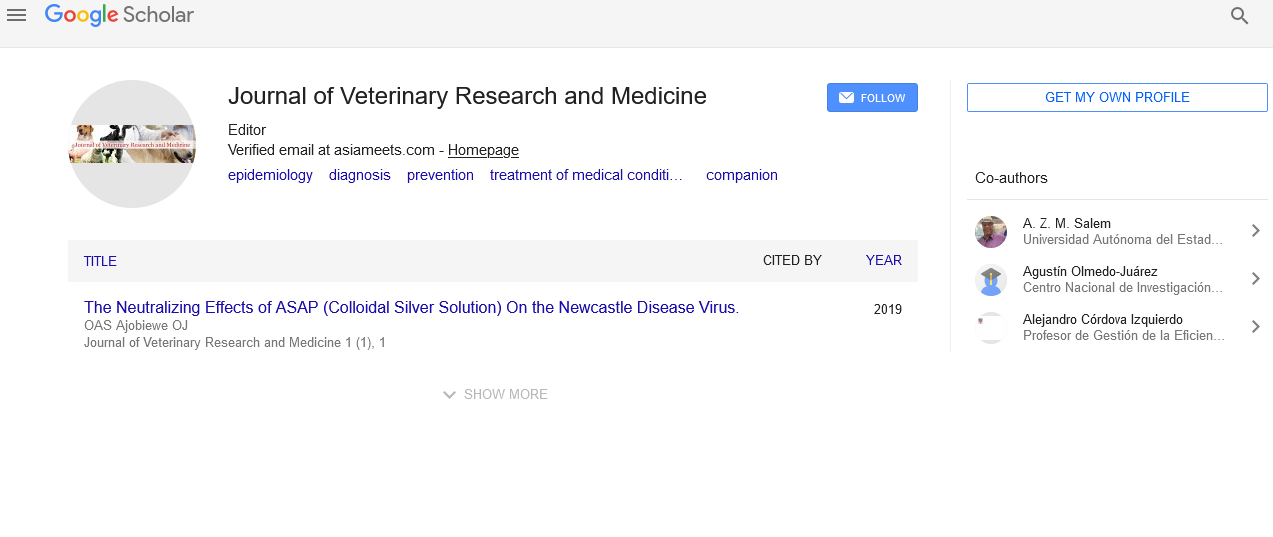Insights of reptiles and immune system
Received: 07-Dec-2021 Accepted Date: Dec 21, 2021; Published: 28-Dec-2021
Citation: Mark M. Insights of reptiles and immune system. J Vet Res Med. 2021;3(3);5.
This open-access article is distributed under the terms of the Creative Commons Attribution Non-Commercial License (CC BY-NC) (http://creativecommons.org/licenses/by-nc/4.0/), which permits reuse, distribution and reproduction of the article, provided that the original work is properly cited and the reuse is restricted to noncommercial purposes. For commercial reuse, contact reprints@pulsus.com
Description
The vertebrate immune device is a hugely complicated community of circulating cells and molecules in addition to big tissues and organs. While composed of each innate and adaptive component, there's a great deal cross speak among those branches. The innate department of the immune device is idea to have developed earlier than the adaptive department, and is characterized via way of means of a fixed of nonspecific responses that act fast as an preliminary protection in opposition to pathogens, and does now no longer require preceding publicity to mount a complete reaction humoral responses. The cells that include the adaptive immune device of jawed vertebrates have lengthy been recognized to generate numerous antigen receptors for detection and removal of pathogens through rearrangement of immunoglobulin genes. In addition, lately a brand new sort of Variable Lymphocyte Receptor (VLR) composed of leucine wealthy repeats has been diagnosed with inside the sea lamprey (Petromyzon marinus), a jawless fish.
Innate Immune device is made out of quite a few molecules and cells that act as a non-particular first line of safety in opposition to pathogens and consists of antimicrobial peptides, lysozymes, the supplement pathway and non-particular leukocytes. Lysozymes are enzymes that may purpose the lysis of microorganism via way of means of hydrolysis in their mobileular wall, and had been remoted from lizards and numerous species of turtles. Lysozyme from the Indian soft-shelled turtle (Trionyx gangeticus) become proven to have comparable enzymatic houses whilst as compared with bird lysozyme, and the small variations observed have been attributed to variations of their number one shape. A contrast of lysozymes from the Chinese soft-shelled turtle, Asiatic soft-shelled turtle (Amyda cartilagenea) and inexperienced sea turtle (Chelonia mydas) observed that whilst every had various stages of lytic cappotential in opposition to numerous traces of each Gram-advantageous and Gram-poor microorganism, none have been powerful in opposition to the microorganism traces that have been the maximum pathogenic to reptile species. In addition to lysozymes, reptiles additionally have antimicrobial proteins which might be comparable in shape and feature to defensins. Defensins are proteins which have a characteristic -sheet-wealthy fold in addition to six disulphide-related cysteine’s and had been observed in all mammals which have been tested in addition to in birds. Egg white of the loggerhead sea turtle (Caretta) lacks lysozyme however incorporates a small cationic protein that structurally and functionally resembles a subfamily of defensins referred to as fed- ensins.
Cell-mediated immunity includes a category of lymphocytes referred to as T cells. T cells modify antibody manufacturing however do now no longer honestly produce antibodies. Functional T cells had been observed in all reptiles tested, which include snakes, lizards, turtles and tuatara. An activated T mobileular can differentiate into forms of T cells, both a cytotoxic T mobileular (TC) and a T helper mobileular (TH).
Cytotoxic T cells unexpectedly kill a mobileular that has been inflamed via way of means of a microorganism or virus via way of means of triggering apoptosis and also can assault altered or broken cells, including cancerous cells.
Conclusion
T helper cells feature to modify different immune cells. In mammals, T helper cells can similarly be subdivided into TH1 and TH2 cells, with TH1 cells moving immune responses towards a mobileular-mediated reaction, and TH2 cells moving toward a humoral reaction.
An early examine at the function of the thymus with inside the immune responses of the lizard Calotes versicolor propose the presence of each a cytotoxic-like T mobileular and a regulatory T helper mobileular in reptiles. Because reptiles do now no longer have lymph nodes and do now no longer shape germinal centers, that are web sites of immune mobileular interactions in mammals, T helper cells in reptiles can also additionally have a special function than T helper cells in mammals.
Further research exploring the capability of the T mobileular in reptiles, including interactions with B cells, and the function of T cells in protection in opposition to parasites and pathogens are needed.





